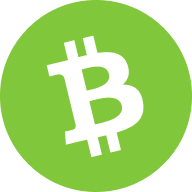BCH Hazinesi: Blockchain, Devlet Borçlarının Tokenizasyonunu Nasıl Devrimleştiriyor?
BCH Hazinesi ve Blockchain Tokenizasyonuna Giriş
Blockchain teknolojisi ile geleneksel finansın birleşimi, özellikle devlet borçlarının tokenizasyonunda dönüştürücü fırsatlar sunuyor. Canton Network gibi blockchain ağları, finansal sistemleri nasıl devrimleştirebileceğini keşfederek bu yeniliğin ön saflarında yer alıyor. Bu makale, blockchain'in ABD Hazine bonoları gibi gerçek dünya varlıklarını tokenleştirmedeki rolünü inceleyerek, piyasa verimliliğini, şeffaflığı ve kurumsal benimsemeyi artırma potansiyelini vurguluyor.
Devlet Borçlarının Tokenizasyonu Nedir?
Tokenizasyon, devlet borçları gibi gerçek dünya varlıklarının bir blockchain üzerinde dijital tokenlara dönüştürülmesi sürecidir. Bu tokenlar, altta yatan varlığa sahiplik veya hakları temsil eder ve finansal işlemlerde alınıp satılabilir veya teminat olarak kullanılabilir. Örneğin, Canton Network üzerinde gerçekleştirilen bir işlem, tokenleştirilmiş ABD Hazine bonolarının USDC destekli finansman için teminat olarak nasıl kullanılabileceğini göstererek blockchain'in geleneksel finansı modernize etme potansiyelini ortaya koydu.
Devlet Borçlarının Tokenleştirilmesinin Faydaları
Gerçek Zamanlı Mutabakat: Blockchain, yalnızca mesai saatlerinde çalışan geleneksel finansal sistemlerle ilişkili gecikmeleri ortadan kaldırarak neredeyse anlık işlem mutabakatı sağlar.
Artan Şeffaflık: Tokenleştirilmiş varlıklar, değiştirilemez bir blockchain defterine kaydedilir ve sahiplik ile işlem geçmişine net bir görünürlük sağlar.
Geliştirilmiş Piyasa Verimliliği: Mutabakat sürelerini azaltarak ve 7/24 finansmanı mümkün kılarak, tokenizasyon likiditeyi artırır ve finansal operasyonları kolaylaştırır.
Teminat Hareketliliği: Tokenleştirilmiş varlıklar kolayca transfer edilebilir ve teminat olarak kullanılabilir, yeni finansman fırsatlarının önünü açar.
Blockchain Benimsenmesinde Canton Network'ün Rolü
Digital Asset tarafından geliştirilen Canton Network, geleneksel finans ile merkeziyetsiz blockchain altyapısı arasındaki boşluğu doldurmak için tasarlanmış gizlilik odaklı bir blockchain'dir. ABD Hazine bonolarını tokenleştirme konusundaki son gösterimi, finansal sistemdeki verimsizlikleri ele alma potansiyelini vurguluyor.
Canton Network'ün Temel Özellikleri
Gizlilik Odaklı Tasarım: Halka açık blockchain'lerin aksine, Canton Network gizliliği ön planda tutar ve bu da onu kurumsal kullanım için ideal hale getirir.
Uyumluluk: Ağ, mevcut finansal sistemlerle sorunsuz bir şekilde entegre olur ve kurumların altyapılarını tamamen yenilemeden blockchain'i benimsemelerine olanak tanır.
Kurumsal Katılım: Bank of America, Circle ve Citadel Securities gibi büyük oyuncular, Canton Network üzerindeki girişimlere katılarak blockchain teknolojisine olan güvenin arttığını gösteriyor.
Merkeziyetsiz Finansın (DeFi) Kurumsal Benimsenmesi
Devlet borçlarının tokenleştirilmesi, merkeziyetsiz finans (DeFi) ilkelerinin geleneksel finansal piyasalara entegre edilmesinin bir parçasıdır. Kurumlar, blockchain'in verimliliği artırma, maliyetleri düşürme ve yeni finansal fırsatların kilidini açma potansiyelini giderek daha fazla fark ediyor.
Kurumlar Neden Blockchain'i Benimsiyor?
Maliyet Tasarrufu: Blockchain, aracı kurumlara olan bağımlılığı azaltarak işlem maliyetlerini önemli ölçüde düşürür.
Geliştirilmiş Güvenlik: Blockchain'in merkeziyetsiz yapısı, siber saldırılara ve dolandırıcılığa karşı daha dayanıklı hale getirir.
Düzenleyici Uyum: Blockchain'in şeffaflığı, kurumların düzenleyici gereklilikleri daha etkili bir şekilde karşılamasına yardımcı olur.
Tokenizasyon Çabalarının Ölçeklenmesindeki Zorluklar
Tokenizasyonun faydaları büyük olsa da, yaygın benimsenmeyi sağlamak için birkaç zorluk ele alınmalıdır:
Düzenleyici Engeller
Hükümetler ve düzenleyici kurumlar, varlık tokenizasyonu için net çerçeveler oluşturmalıdır. Bu, vergilendirme, uyumluluk ve yatırımcı koruması gibi konuları ele almayı içerir.
Daha Geniş Kurumsal Benimseme
Tokenizasyonun tam potansiyeline ulaşması için daha fazla finansal kurumun blockchain teknolojisini benimsemesi gerekiyor. Bu, değişime karşı direncin aşılmasını ve gerekli altyapıya yatırım yapılmasını gerektirir.
Siber Güvenlik Riskleri
Herhangi bir dijital teknoloji gibi, blockchain de siber güvenlik tehditlerine karşı bağışık değildir. Tokenleştirilmiş varlıkların güvenliğini sağlamak, kullanıcılar ve kurumlar arasında güven oluşturmak için kritik öneme sahiptir.
Geleneksel Finansta Blockchain'in Geleceği
Devlet borçlarının ve diğer gerçek dünya varlıklarının tokenleştirilmesi, blockchain'in geleneksel finansa entegrasyonu yolunda önemli bir adımı temsil ediyor. Verimsizlikleri gidererek, şeffaflığı artırarak ve gerçek zamanlı mutabakatı mümkün kılarak, blockchain finansal piyasaları devrimleştirme potansiyeline sahiptir.
Önemli Çıkarımlar
ABD Hazine bonolarının blockchain teknolojisini keşfetmesi, tokenizasyona olan artan ilgiyi vurguluyor.
Canton Network'ün gizlilik odaklı yaklaşımı, onu geleneksel finans ile blockchain arasında bir köprü olarak konumlandırıyor.
Blockchain'in maliyet tasarrufu, gelişmiş güvenlik ve operasyonel verimlilik vaatleriyle kurumsal benimseme hızlanıyor.
Düzenleyici engeller ve siber güvenlik riskleri gibi zorluklar, tokenizasyon çabalarının ölçeklenmesi için ele alınmalıdır.
Sonuç
Blockchain teknolojisinin geleneksel finansa entegrasyonu artık uzak bir vizyon değil—şu anda gerçekleşiyor. ABD Hazine bonolarının ve diğer gerçek dünya varlıklarının tokenleştirilmesi, daha verimli, şeffaf ve kapsayıcı bir finansal sistemin yolunu açıyor. Kurumlar ve düzenleyiciler zorlukların üstesinden gelmek için iş birliği yaptıkça, finans dünyasında blockchain'in geleceği giderek daha umut verici görünüyor.



